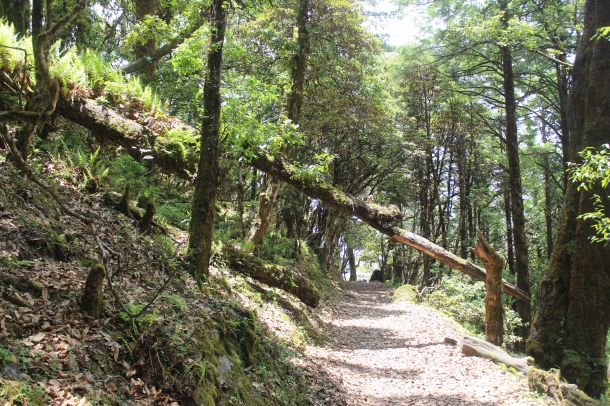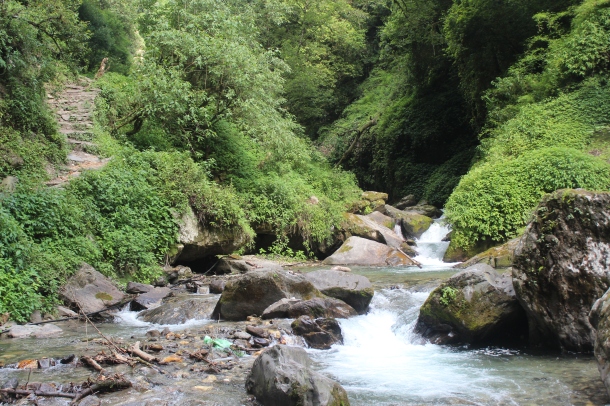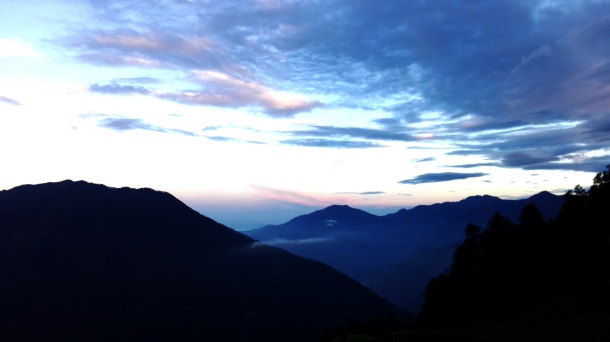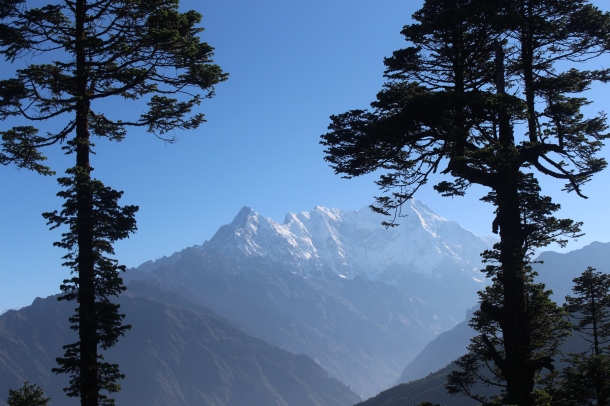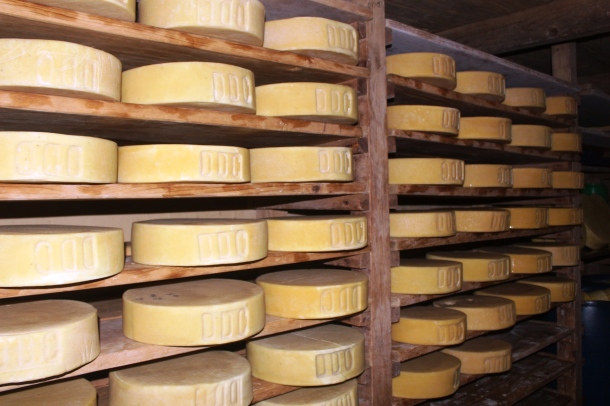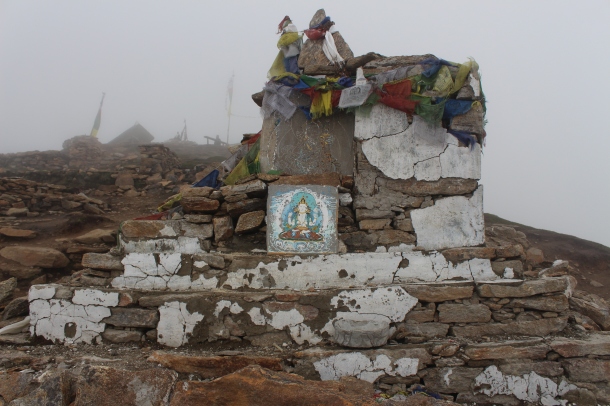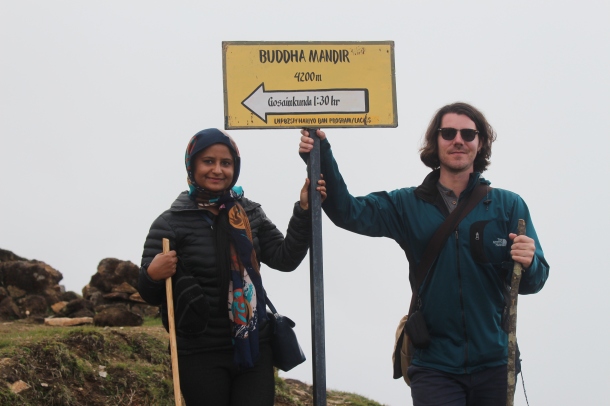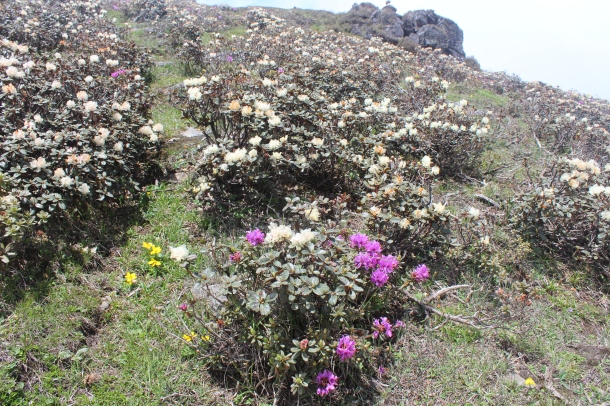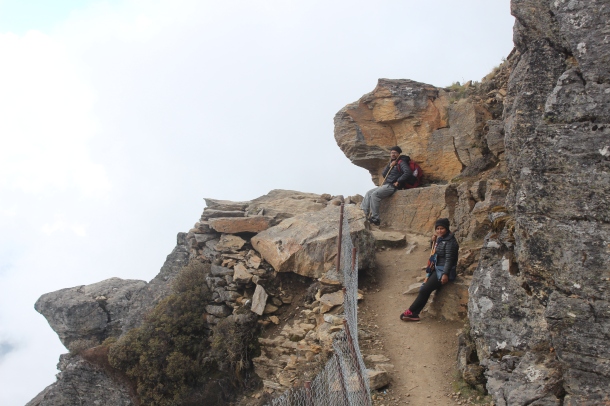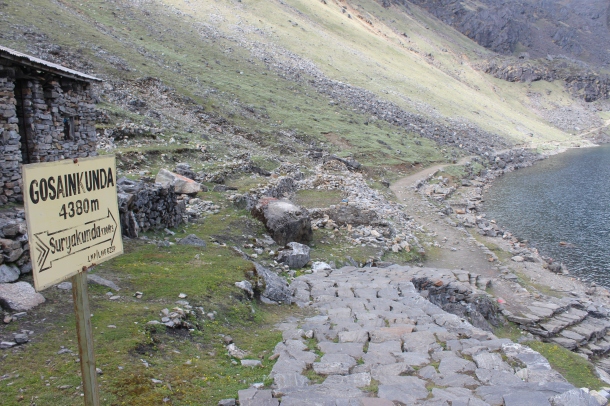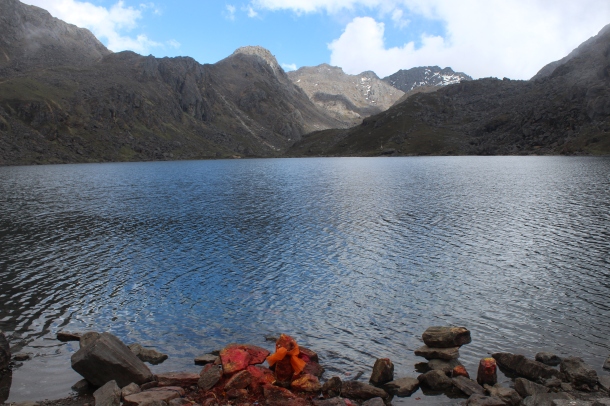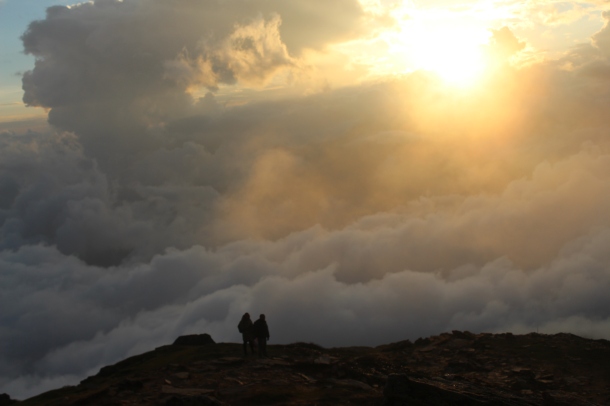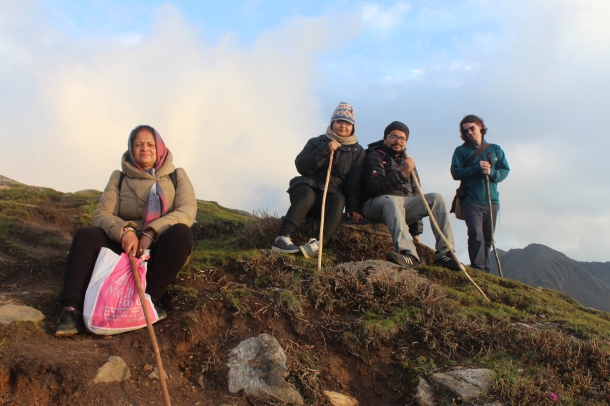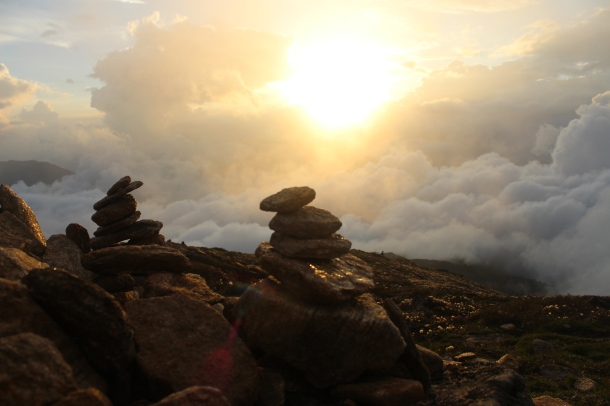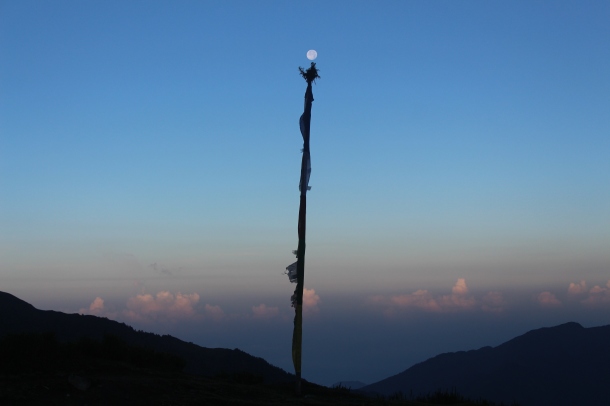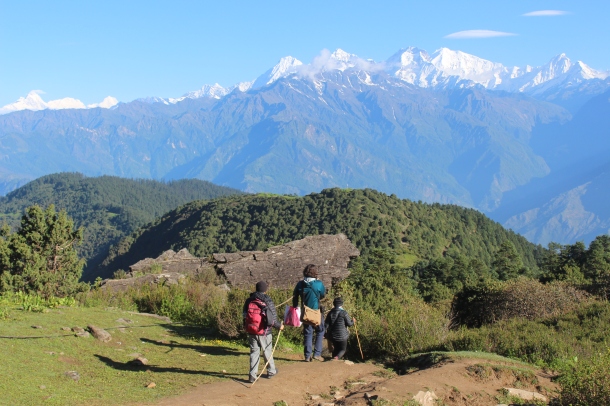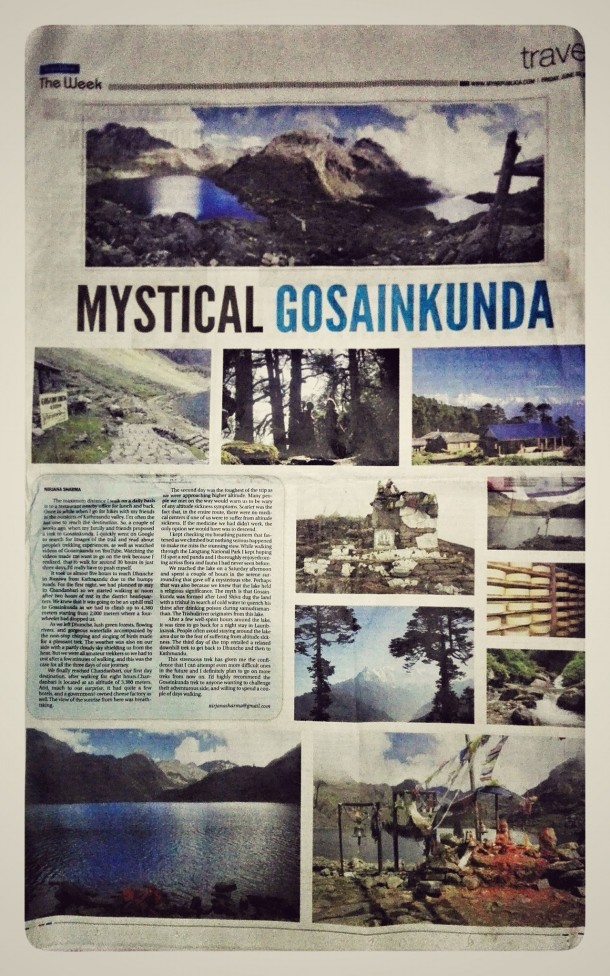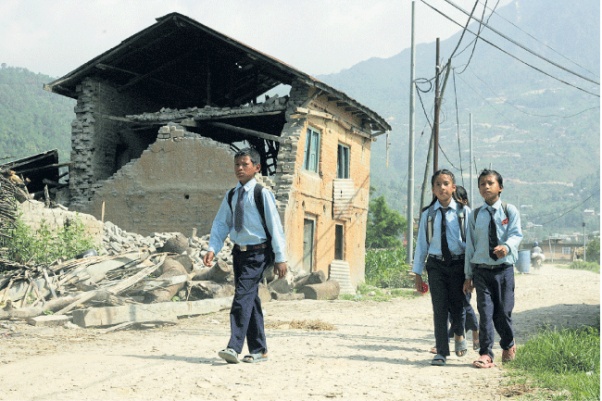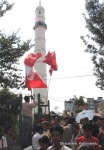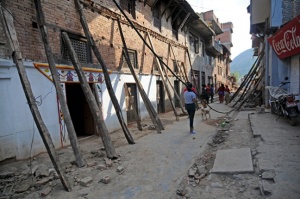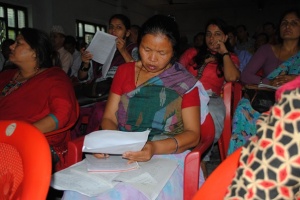NIRJANA SHARMA
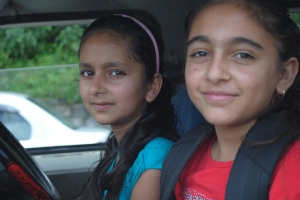
She gets all her needs (and demands) fulfilled even before she voices her wishes. Roshani Gautam, 12, has quite a good, if not luxurious, lifestyle. Delicious food, fancy dresses, and good school are things that she now takes for granted. This girl who seems to have it all, however, has one unfulfilled wish: She wants to meet her father.
But her father cannot come to her neither can she run to him when she wants to share her little achievements at school or talk about the friends. For the last couple of years, her father has been in Malaysia, toiling away to provide for his family and little girl.
“My father asks me to study hard and promises rewards if I do well and make him proud,” said Roshani on her way to Baglung from Pokhara recently, explaining that their phone conversations are usually limited to such topics.
Once in a while, the girls go home to meet their mothers. But they do not have the option of meeting their fathers whenever they wish to do so. Roshani has met her father just a handful of times. Her father came home in January and she got to spend some time with him. This recent visit is the only memory she has of her father. She does not remember his earlier visits.
Similar is the story of her cousin Sujata Poudel, whose father is in the Gulf. Both the girls, who currently study in grade six, are hopeful of seeing their fathers by the time they reach the eighth or ninth grade.
The mothers have convinced them that their lives are easier and better because their fathers are working hard abroad. But the girls have realized that the comforts come at a heavy price: Their relations with their respective fathers are non-existent.
Roshani and Sujata are the representative cases not only in the western region of the country where they belong but across the country, hundreds of thousands of children are growing up in the absence of their fathers, only hearing their voices once in a while. The fatherly affection for this generation is limited to the few occasions of union and telephone conversations.
Nepal, being a country that went through a decade long civil war, gave little option for youths to find a job to sustain their lives. Following the prolonged political instability, the rate of youths living abroad is ever increasing, and so is the rate of remittance flowing into Nepal.
At present, remittance contributes to 30 percent of the share in the total GDP of the country. But the absence of an important member in the family is fast changing the social dynamics. Moreover, the children are being raised without certain family values and there is no concept of having a father and a mother in a family. And this family breakdown has taken a toll on the innocent children.
“Fathers are no more the heroes or role models. They are merely the ones who earn and send in money for the families to be able to lead a good life,” says psychologist Ganga Pathak analyzing the changing psychology of migrant workers’ children.
Baglung, Roshani’s hometown, is one of the districts of Nepal that brings in the highest rate of remittance. Myagdi, Sujata’s hometown, is considered equally important in this department.
From the three districts of Dhaulagiri zone – Parbat, Baglung, and Myagdi – around 80,000 youths were working abroad at the time when the national census was taken in 2011. Some 1.9 million youths were recorded as working abroad on the basis of the absent population throughout the country. The number has gone up in past four years ensuring that more amount comes home as remittance.
These three districts are considered the country’s most prosperous districts in terms of remittance. In terms of development, these districts house big hydropower projects of national grid. The youths’ working days and nights abroad have improved the living standards of the residents in the districts while the emerging cities in the districts show signs of a bright future.
Beni, headquarter of Myagdi district, dazzles days and nights. Fancy outlets of branded clothes are not a surprise at this small locality and locals sporting private cars are nothing new. There are many jewelry stores too at Beni Bazar. There are hotels targeting trekkers and tourists as Beni sees an overwhelming number of tourists each year, being on the way to many trekking destinations like Ghorepani, and Cave hills to name a few.
The jewelry shops, and the fancy stores are always bustling with customers. People from the far away VDCs have got enough money to go on lavish shopping sprees at the district headquarters.
But there is no denying that family breakdown has victimized the children. In the last year alone, over 70 cases of divorce have been cleared by the Myagdi District Court. The number of cases filed for divorce pending at the court is even more.
The children’s apathy increases in many ways after their parents get divorced, shows one of the cases in Myagdi. The divorce due to an accusation of infidelity on the wife’s part left their two children in a lurch, said the officials at the court.
After returning to Malaysia after the divorce, the father started sending Rs 7,000 per month to cover the cost of his children’s education to one of his relatives. The amount was settled at court to ensure that the kids are looked after.
The children almost paid a high price for their father’s hatred towards their mother. The money he sent never reached them. Now, the mother has again gone to court to ensure that the money reaches her, and in turn her two children.
“Poverty might have gone from people’s life but the fragmentation of family structure is the biggest problem we see here now,” said a local journalist Pratap Baniya. Seeing no opportunities to invest their earnings and stay back home, the migrant workers prefer to return to those countries. According to Baniya, lack of opportunities in the country has, in a way, compelled them to stay abroad.
Psychologists find multiple impacts upon children raised by a single parent. “A person’s childhood shapes his actions, behavior and attitude as an adult. The mother and father together bring in balance to a kid’s life, and the absence of even one creates a huge imbalance,” says psychologist Pathak.
Many children have started believing that fathers are obliged to fulfill their needs and that their role begins and ends with this responsibility. According to Pathak, this mindset and detachment could make them arrogant and self-centered when they grow up. And Pathak’s analysis has, to some extent, already come true in Myagdi.
Far off at Babiya Chaur village, six miles away from Beni, a teacher has a worrisome thought to share. Uma Devi Poudel, a primary level teacher at Tribhuvan Mangal Secondary School says, “Many children show no emotions when they talk about their fathers who are away. For them, a father is someone who goes away to work and sends in money for them to be able to buy what they want and lead good lives.”
– See more at: http://www.myrepublica.com/the-week/story/26756/the-void.html#sthash.oVCghvWR.Ngovxpnm.dpuf
nirjanasharma@gmail.com
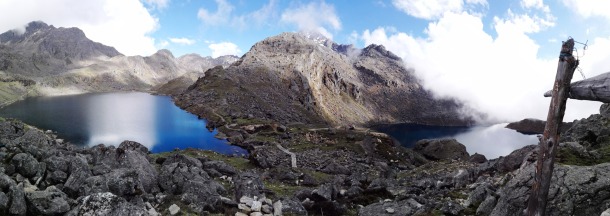 The maximum distance I walk on a daily basis is to a restaurant nearby office for lunch and back. Once in while when I go for hikes with my friends in the outskirts of Kathmandu valley, I’m often the last one to reach the destination. So, a couple of weeks ago, when my family and friends proposed a trek to Gosainkunda, I quickly went on Google to search for images of the trail and read about people’s trekking experiences, as well as watched videos of Gosainkunda on YouTube. Watching the videos made me want to go on the trek because I realized, that to walk for around 30 hours in just three days, I’d really have to push myself.
The maximum distance I walk on a daily basis is to a restaurant nearby office for lunch and back. Once in while when I go for hikes with my friends in the outskirts of Kathmandu valley, I’m often the last one to reach the destination. So, a couple of weeks ago, when my family and friends proposed a trek to Gosainkunda, I quickly went on Google to search for images of the trail and read about people’s trekking experiences, as well as watched videos of Gosainkunda on YouTube. Watching the videos made me want to go on the trek because I realized, that to walk for around 30 hours in just three days, I’d really have to push myself.